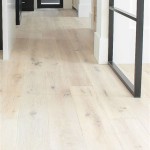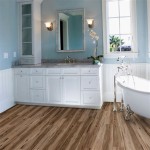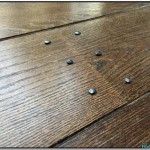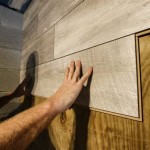How To Remove Hairspray Residue From Vinyl Flooring
Vinyl flooring, prized for its durability, affordability, and aesthetic versatility, is a common choice for many homes. However, even the most resilient flooring can fall victim to unsightly stains and residues. One persistent offender, particularly in bathrooms and dressing areas, is hairspray. This sticky substance, designed to hold hairstyles in place, often drifts and settles onto the flooring, creating a dull, tacky film that attracts dirt and grime. Removing hairspray residue from vinyl flooring requires a systematic approach and appropriate cleaning agents to avoid damaging the surface.
The challenge with hairspray lies in its composition. Formulated with polymers, resins, and solvents, it's designed to adhere strongly. Over time, repeated application and settling of hairspray can create a stubborn buildup that resists ordinary cleaning methods. Attempting to scrub the residue away with abrasive cleaners or harsh tools can scratch or dull the vinyl's surface, compromising its appearance and potentially shortening its lifespan. Therefore, a gentle yet effective approach is essential to successfully remove the hairspray without causing damage.
Before embarking on any cleaning process, it is crucial to identify the type of vinyl flooring. There are different types of vinyl, including sheet vinyl, vinyl tiles, and luxury vinyl planks (LVP). While most cleaning methods are generally safe for all types, some highly specialized cleaners or techniques might be better suited for specific vinyl compositions. Checking the manufacturer's instructions is always a good starting point to ensure compatibility.
Key Point 1: Prepare the Area and Gather Supplies
The first step in removing hairspray residue is proper preparation. Start by clearing the area of any loose debris such as dust, pet hair, or other surface dirt. This can be achieved by sweeping, vacuuming with a soft brush attachment, or using a microfiber dust mop. Removing this loose material prevents it from being ground into the hairspray residue during the cleaning process, which could exacerbate the problem and potentially scratch the flooring.
Next, gather the necessary supplies. The essential tools include:
- A spray bottle
- Clean microfiber cloths (multiple)
- Warm water
- White vinegar (or rubbing alcohol as an alternative)
- Mild dish soap (optional)
- A soft-bristled brush or sponge (optional, for stubborn areas)
- A bucket (optional, if mixing a larger cleaning solution)
Having all the necessary supplies readily available will streamline the cleaning process and prevent interruptions. Choosing microfiber cloths is important because they are non-abrasive and highly absorbent, making them ideal for gently lifting away the hairspray residue without damaging the vinyl.
Consider testing the cleaning solution in an inconspicuous area of the vinyl flooring before applying it to the entire affected surface. This is especially important if the flooring is old or has a delicate finish. Testing ensures that the cleaning solution does not cause discoloration, fading, or any other undesirable effects. Choose a small, hidden area, such as under a cabinet or in a closet, to conduct the test. Apply a small amount of the solution, let it sit for a few minutes, and then wipe it away. Observe the area for any adverse reactions before proceeding with the full cleaning.
Key Point 2: Applying the Cleaning Solution
The primary cleaning solution for removing hairspray residue involves a mixture of warm water and white vinegar. White vinegar is a mild acid that effectively breaks down the sticky polymers in hairspray without being overly harsh on the vinyl flooring. The recommended ratio is typically one part white vinegar to two parts warm water. This mixture can be adjusted depending on the severity of the residue buildup. For lighter residue, a weaker solution may suffice. For heavier buildup, a slightly stronger solution can be used, but it is important to avoid using undiluted vinegar, as this can potentially damage the vinyl over time.
Once the vinegar and water solution is prepared, pour it into a spray bottle. Spray the affected area liberally, ensuring that the hairspray residue is thoroughly saturated. Allow the solution to sit on the surface for approximately 5-10 minutes. This dwell time allows the vinegar to penetrate and loosen the hairspray, making it easier to remove. However, it is important not to let the solution dry on the flooring, as this can leave a new residue or water spots.
After the dwell time, gently wipe the area with a clean microfiber cloth. Use a circular motion to lift away the loosened hairspray residue. Avoid scrubbing vigorously, as this can potentially scratch the vinyl. If the residue is particularly stubborn, a soft-bristled brush or sponge can be used to gently agitate the area. However, it is crucial to apply minimal pressure and avoid using abrasive scrubbing pads, as these can damage the vinyl's surface.
For particularly heavy or resistant hairspray buildup, an alternative cleaning solution using rubbing alcohol can be considered. Rubbing alcohol is a stronger solvent than vinegar and can be effective in dissolving stubborn residues. However, it is important to use rubbing alcohol with caution, as it can potentially damage some types of vinyl flooring. Always test the solution in an inconspicuous area first. When using rubbing alcohol, dilute it with water in a 1:1 ratio. Apply the solution to the affected area, let it sit for a few minutes, and then wipe away with a clean microfiber cloth.
In some cases, a small amount of mild dish soap can be added to the vinegar and water solution to enhance its cleaning power. Dish soap contains surfactants that help to emulsify and lift away dirt and grime. However, it is important to use a small amount of soap and ensure that it is thoroughly rinsed away to prevent a soapy residue from being left behind. Add only a few drops of dish soap to the vinegar and water solution and mix well before spraying the affected area.
Key Point 3: Rinsing and Drying the Flooring
After wiping away the hairspray residue with the cleaning solution, it is essential to rinse the flooring thoroughly with clean water. This step removes any remaining cleaning solution and prevents residue buildup. Use a clean microfiber cloth dampened with clean water to wipe the entire area. Repeat this process several times, ensuring that all traces of the cleaning solution are removed. For larger areas, consider using a mop with a clean mop head to rinse the flooring more efficiently.
Once the flooring has been thoroughly rinsed, it is important to dry it completely. Leaving the flooring wet can lead to water spots, mildew growth, and potential damage to the vinyl. Use a clean, dry microfiber cloth to wipe the entire area and absorb any remaining moisture. Alternatively, a dry mop can be used to dry larger areas more quickly. Ensure that all edges and corners are thoroughly dried to prevent water from seeping under the flooring.
For optimal results, consider using a fan to circulate air and speed up the drying process. Place a fan near the cleaned area and set it to a low or medium speed. This will help to evaporate any remaining moisture and prevent water spots from forming. Allow the flooring to air dry completely before walking on it to avoid tracking dirt or leaving footprints.
After the flooring is completely dry, inspect the area to ensure that all hairspray residue has been removed. If any residue remains, repeat the cleaning process. It may be necessary to apply the cleaning solution and allow it to dwell for a longer period of time or use a slightly stronger solution. However, always exercise caution and avoid using harsh chemicals or abrasive tools that could damage the vinyl flooring.
To maintain the cleanliness and appearance of vinyl flooring, regular cleaning is essential. Sweep or vacuum the flooring regularly to remove loose dirt and debris. Mop the flooring with a mild cleaning solution, such as a mixture of water and vinegar or a commercial vinyl floor cleaner, at least once a week. Promptly clean up any spills or stains to prevent them from setting and becoming difficult to remove. Avoid using abrasive cleaners or harsh chemicals, as these can damage the vinyl's surface. By following these simple maintenance tips, the vinyl flooring can be kept clean, shiny, and looking its best for years to come.
Preventing hairspray buildup in the first place is always the best approach. Consider applying hairspray in a well-ventilated area, such as near an open window or door. Use a towel or mat to protect the flooring from overspray. Regularly clean the flooring to remove any hairspray residue before it has a chance to build up. By taking these preventative measures, the frequency and intensity of hairspray residue removal can be significantly reduced.

How To Remove Hairspray Residue From Floor Adventures Of A Diy Mom

How To Remove Hairspray Residue From Floor Adventures Of A Diy Mom

How To Remove Hairspray Residue From Floor House Cleaning Tips S Toilet

Remove Sticky Hairspray Residue From Your Floor With A Borax And Water Paste

How Do You Remove Hairspray Build Up Off Laminate Flooring In Bathroom Hometalk

How To Remove Hairspray Residue

How To Clean Floor Tile Coated With Years Of Hairspray Hometalk

How To Remove Build Up From Laminate Flooring I Tried Hometalk

How To Clean Vinyl Floors 11 Tricks You Need Know Trusted Since 1922

How To Remove Hairspray From Almost Everything Kiwi Services
Related Posts








